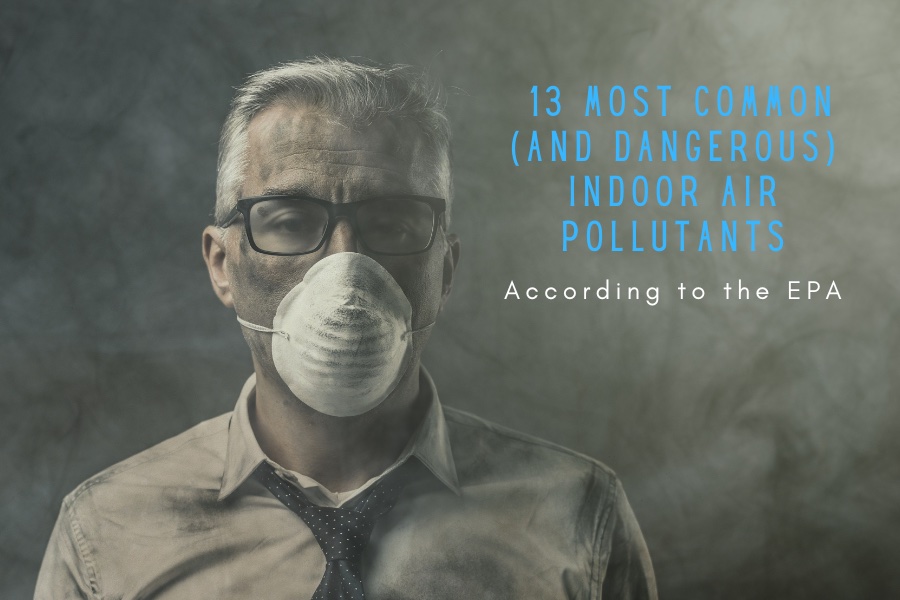
At the mention of “air pollution,” we often think of factory smokestacks pumping soot into the air, congested freeways choked with car fumes, or a smoggy Southern California skyline.
But what about the air we breathe inside our homes? After all, these days Americans spend more than 90% of their time inside. Unfortunately, because it’s what you’re breathing most often, indoor air is often more dangerous than outdoor pollution.
But what’s actually lurking in the air we breathe inside? According to the EPA, there are 13 indoor air pollutants most likely to create health problems. In this article, we’ll break down these dangerous pollutants and give you some practical tips on how to reduce your exposure to them.
1. Asbestos
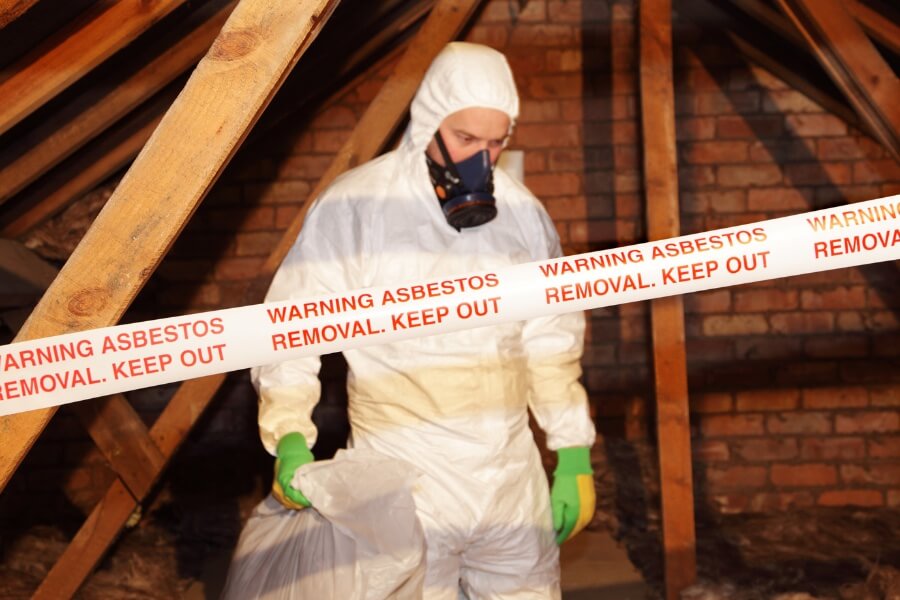
Asbestos is a naturally occurring fibrous mineral that was often used in home construction due to its exceptional heat resistance, tensile strength, and insulation properties. However, asbestos is hazardous to indoor air quality because it has microscopic fibers that become airborne when disturbed and are easily inhaled. The inhalation of asbestos fibers has been shown to cause serious health issues, such as asbestosis (a chronic lung disease), lung cancer, and mesothelioma (a rare cancer affecting the lining of the chest and abdomen).
Where it comes from: The primary source of asbestos in indoor air is building materials used in construction prior to the 1980s, such as insulation, floor tiles, roofing materials, and textured paints.
EPA recommendation: Homeowners should be cautious when renovating or performing maintenance on older properties, as disturbing materials known to contain asbestos can release asbestos fibers into the air. If you aren’t sure or are worried about asbestos in your home, have a professional assess and remove it. [Source]
2. Biological Pollutants

Biological pollutants are living organisms or their byproducts, such as bacteria, viruses, fungi, mold, dust mites, pet dander, and pollen, which can negatively affect human health. These contaminants can cause various health issues ranging from allergic reactions, asthma, infectious diseases, and more severe toxic reactions.
Where it comes from: Biological pollutants are commonly found in damp areas like bathrooms, kitchens, and basements, as well as poorly ventilated spaces such as attics and crawl spaces, and can be introduced through pets, houseplants, and outdoor air.
EPA Recommendation: “General good housekeeping, and maintenance of heating and air conditioning equipment, are very important. Adequate ventilation and good air distribution also help. The key to mold control is moisture control. Employ integrated pest management to control insect and animal allergens.” [Source]
3. Carbon Monoxide (CO)
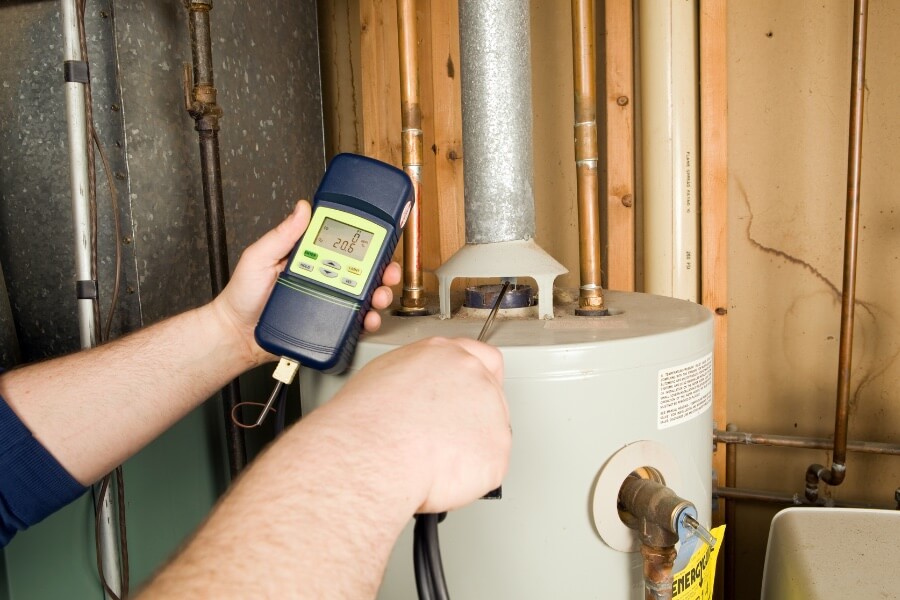
Carbon monoxide (CO) is a colorless, odorless gas that can be deadly if inhaled in high concentrations. It is produced by incomplete combustion of fossil fuels and can accumulate indoors, posing a risk to occupants. Symptoms of carbon monoxide poisoning include headache, dizziness, weakness, nausea, and confusion, which can progress to unconsciousness or death.
Where it comes from: CO shows up where fuel-burning appliances are present, such as gas stoves, furnaces, water heaters, and fireplaces. CO can also enter the home from attached garages where cars are running or from outdoor sources, such as nearby highways or industrial facilities.
EPA Recommendation: “It is most important to be sure combustion equipment is maintained and properly adjusted. Vehicular use should be carefully managed adjacent to buildings and in vocational programs. Additional ventilation can be used as a temporary measure when high levels of CO are expected for short periods of time. Install carbon monoxide detectors.” [Source]
4. Cookstoves
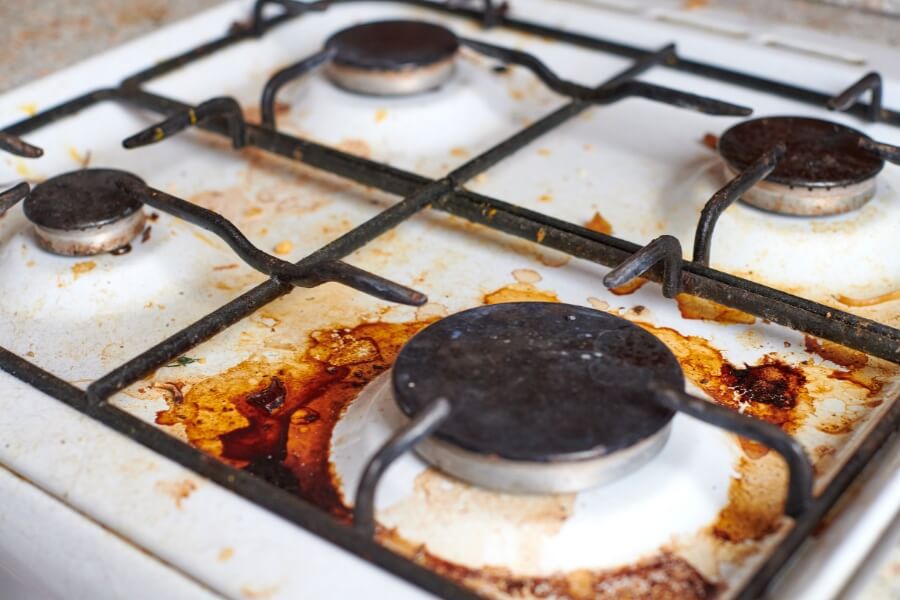
Traditional cookstoves that use solid fuels like wood, charcoal, and coal can emit harmful pollutants into the indoor air, which can be a serious health risk, especially for women and children who spend a lot of time near the stove. These pollutants include fine particles, carbon monoxide, and volatile organic compounds (VOCs), which can cause respiratory problems, cardiovascular disease, and other health issues.
Where it comes from: Cookstoves that use wood, charcoal, and coal are common in older homes that have not been updated with modern venting or well maintained.
EPA Recommendation: Reduce indoor air pollution and protect household health by using clean or improved cookstoves, improving ventilation, using HEPA filters, and reducing time spent near the stove. [Source]
5. Formaldehyde and Pressed Wood Products

Formaldehyde is a chemical widely used in the manufacturing of building materials and household products. It’s also a by-product of some natural processes and combustion, which can be found in significant concentrations indoors. Exposure to formaldehyde can cause skin, eye, nose, and throat irritation. High levels of exposure may also lead to certain types of cancers.
Where it comes from: Pressed wood products made with composite wood materials, such as particleboard, hardwood plywood, and medium-density fiberboard. Other sources of formaldehyde in homes include insulation materials, permanent press fabrics, and personal care products.
EPA Recommendation: Purchase composite wood products that meet ANSI or California Air Resources Board standards, and increase ventilation by using air conditioning and dehumidifiers. Reducing humidity levels can lower formaldehyde emissions. [Source]
6. Lead (Pb)

Lead is a natural element found in the earth that when ingested or inhaled over prolonged periods has adverse health effects, particularly on infants, young children, pregnant women, and pets.
Where it comes from: Airborne lead particles enter homes from deteriorating lead-based paint, lead-contaminated dust, and soil tracked into homes from outside.
EPA Recommendation: To protect your family from lead-based air pollution, identify potential sources of lead in your home (paint, dust, cosmetics, food and water) and take steps to address them, such as keeping your home clean and free of dust, eating a healthy diet, avoiding activities that create lead dust, and testing blood lead levels regularly. [Source]
7. Nitrogen Dioxide (NO2)

Nitrogen dioxide (NO2) is a toxic gas that is mainly found indoors as a result of combustion processes. Exposure to high levels of NO2 can cause irritation to the mucosa of the eyes, nose, throat and respiratory tract, decreased lung function, and increased risk of respiratory infections.
Where it comes from: Sources of nitrogen dioxide include unvented or defective combustion appliances (gas stoves, furnaces, water heaters, and fireplaces), welding, tobacco smoke, and kerosene heaters, as well as outdoor sources such as nearby highways or industrial facilities.
EPA Recommendation: “Venting the NO2 sources to the outdoors, and assuring that combustion appliances are correctly installed, used and maintained are the most effective measures to reduce exposures.” [Source]
8. Pesticides
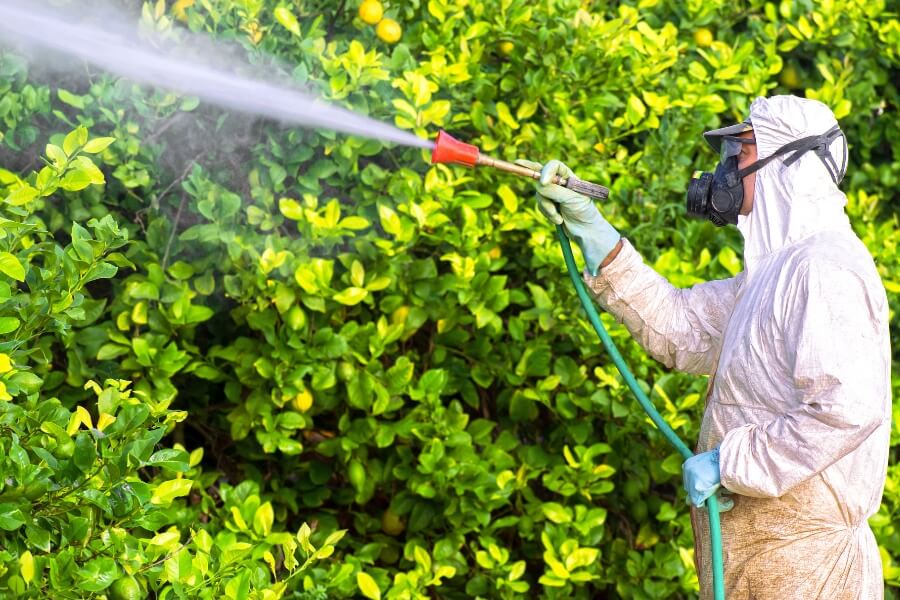
Pesticides are toxic chemicals used in households (both inside and outside) to control pests. They can lead to irritation of the eyes, nose, throat, damage to the central nervous system, kidney and increased risk of cancer.
Where it comes from: Exposure to these chemicals can occur due to their usage indoors, contaminated soil or dust that floats or is tracked in from outside, stored pesticide containers, and household surfaces that collect and then release the pesticides.
EPA Recommendation: “To reduce exposure, it is recommended to use pesticides strictly according to manufacturer’s directions, mix or dilute pesticides outdoors, apply only in recommended quantities, increase ventilation when using indoors, use non-chemical methods of pest control when possible, and dispose of unwanted pesticides safely.” [Source]
9. Radon (Rn)
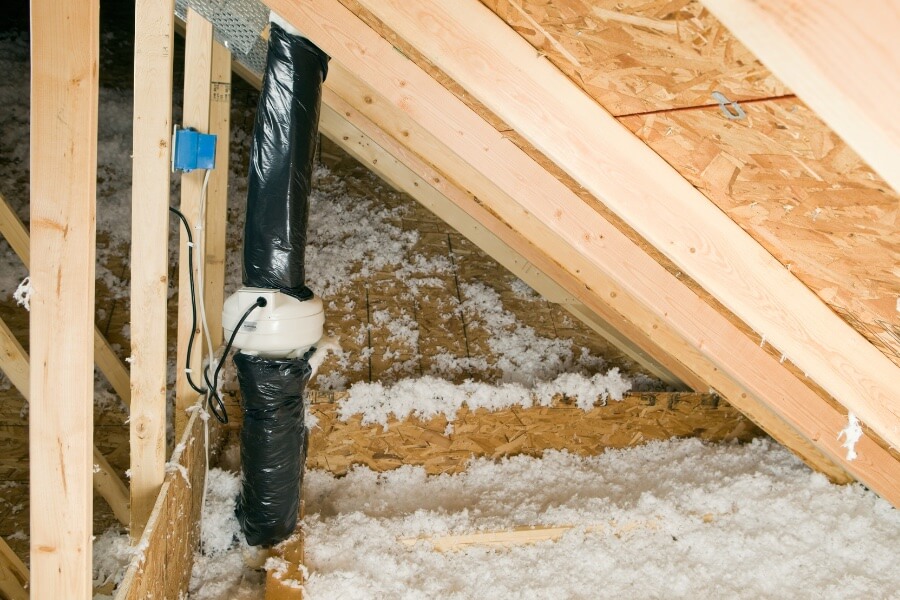
Radon is a radioactive gas that is the second leading cause of lung cancer in the United States after smoking. Exposure to radon can cause lung cancer in non-smokers and smokers alike. It is estimated that radon is responsible for about 21,000 lung cancer deaths every year in the United States. Radon is the number one cause of lung cancer among non-smokers, and it is responsible for about 2,900 deaths among people who have never smoked. The risk of lung cancer is higher for smokers who are also exposed to radon, and the risk is much higher for smokers than for non-smokers.
Where it comes from: Radon comes from the natural radioactive breakdown of uranium in soil, rock, and water. It can enter buildings through cracks and other openings in the foundation. Radon can also be present in well water and construction materials.
EPA Recommendation: Test your home for radon, and fix your home if it has a radon problem (typically through a process called “mitigation”). Use radon-resistant construction techniques if you’re building a new home. Increase ventilation by opening windows and using fans, particularly when doing activities that can increase indoor radon levels, such as running a vacuum cleaner or taking a shower. [Source]
10. Indoor Particulate Matter
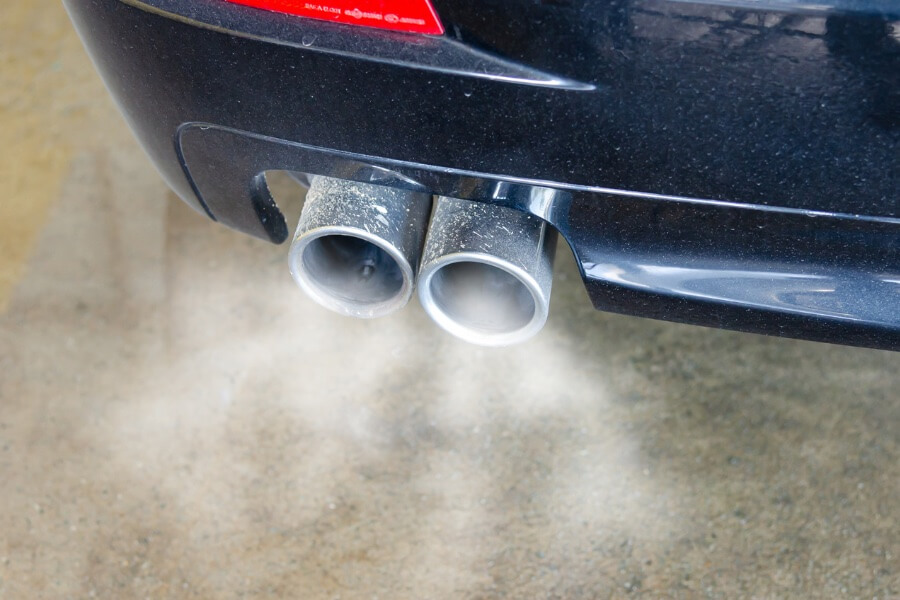
Particulate matter (PM) is a complex mixture of solid and/or liquid particles suspended in air that can vary in size, shape, and composition. The EPA is concerned about particles that are 10 micrometers in diameter or smaller because these particles are inhalable and can affect the heart and lungs, causing serious health effects. The human health effects of outdoor PM are well-established, but PM is also found in all indoor environments and less is known about the specific impacts of indoor PM on health.
Where it comes from: A variety of sources such as outdoor air, combustion (tobacco products, gas appliances, wood-burning stoves), building materials, and indoor activities (cleaning, cooking).
EPA Recommendation: Vent fuel-fired combustion appliances to the outdoors, use exhaust fans vented to the outside when cooking, and avoid the use of unvented stoves, fireplaces, or space heaters indoors. [Source]
11. Secondhand Smoke

Also known as environmental tobacco smoke, secondhand smoke is a mixture of smoke exhaled by smokers and smoke emitted by the burning of tobacco products. Secondhand smoke is classified as a Group A carcinogen by the EPA. Exposure can occur indoors, particularly in homes and cars, and cause numerous health problems in both adults and children, including cardiovascular disease, lung cancer, sudden infant death syndrome, and frequent and severe asthma attacks. There is no risk-free level of exposure to secondhand smoke.
Where it comes from: The burning of tobacco products, such as cigarettes, cigars, and pipes, as well as the smoke exhaled by smokers.
EPA Recommendation: Prohibiting smoking indoors is the only way to eliminate secondhand smoke from the indoor environment, while ventilation and filtration techniques can only reduce, but not eliminate, secondhand smoke. [Source]
12. Volatile Organic Compounds (VOCs)
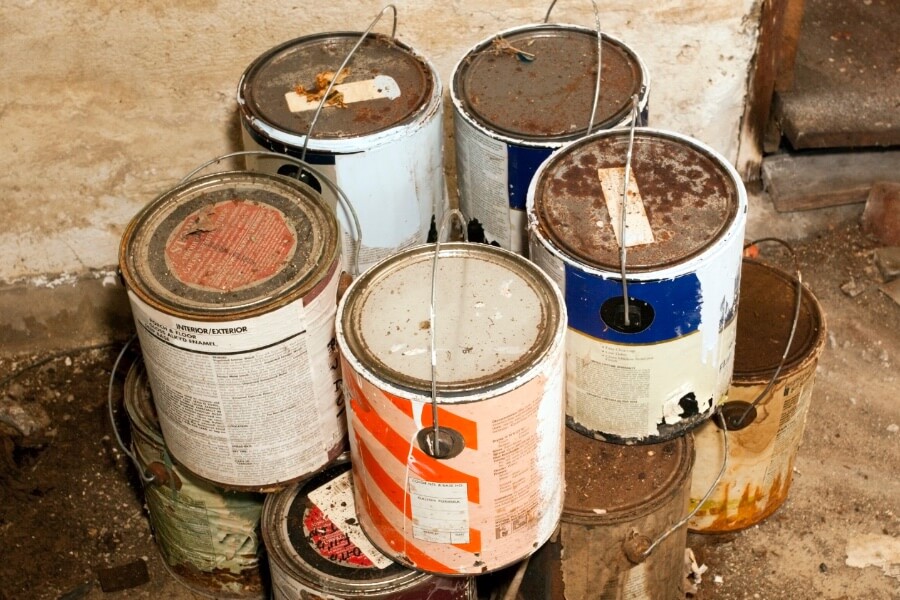
Volatile organic compounds (VOCs) are chemicals emitted from household products, building materials, and furnishings. The concentrations of many VOCs are higher indoors than outdoors, and exposure to VOCs can have adverse health effects such as eye, nose, and throat irritation, headaches, damage to organs, and in some cases, cancer. Immediate symptoms of exposure can include respiratory tract irritation, headaches, dizziness, visual disorders, and memory impairment. No federally enforceable standards have been set for VOCs in non-industrial settings.
Where it comes from: Building materials, household products, and furnishings such as paints, varnishes, cleaning supplies, pesticides, air fresheners, dry-cleaned clothing, as well as personal care products like perfumes, hair sprays, and cleaning agents.
EPA Recommendation: Steps to reduce exposure include increasing ventilation, meeting label precautions, identifying and removing sources, using integrated pest management techniques, and following label instructions carefully. [Source]
13. Wood Smoke

The burning of wood in residential areas can cause air pollution and negatively affect indoor air quality. Wood smoke contains a mixture of harmful pollutants, including fine particles, carbon monoxide, and volatile organic compounds. Exposure to these pollutants can have adverse health effects, particularly for vulnerable populations such as children, older adults, and people with heart or lung disease.
Where it comes from: The most common sources of wood smoke include residential wood-burning, such as wood stoves, fireplaces, and outdoor fire pits or chimneys.EPA Recommendation: “To avoid these inevitable health risks — and gain the greater efficiency and effectiveness of new, cleaner burning technology wood stoves — it is recommended that old stoves be gradually replaced or changed out.” [Source]
Protect yourself from the most common indoor air pollutants
If you’re concerned about what’s in the air you’re breathing at home, consider getting an air quality monitor. IAQ is a small, no-setup smart device that prevents unknown exposure to harmful air pollutants by giving you a reading of what’s in your air. Check it out on Kickstarter today!



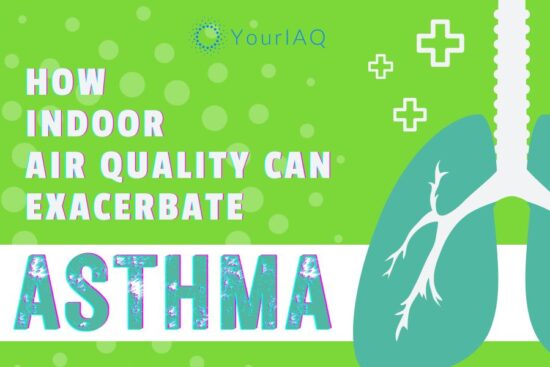
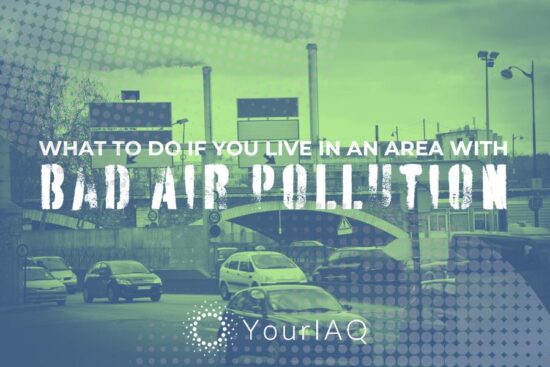
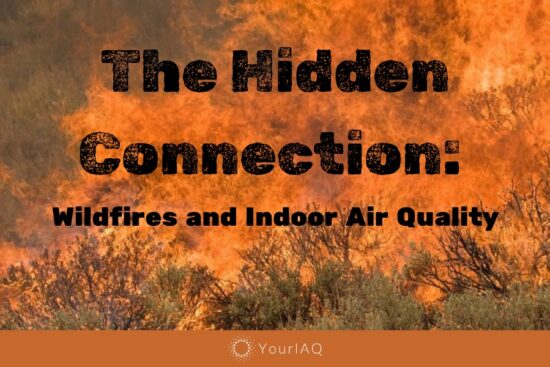


Comments (1)
Dalesays:
January 30, 2024 at 10:38 amHi! I could have sworn I’ve been to this website before but
after reading through some of the post I realized it’s new to me.
Anyhow, I’m definitely glad I found it and I’ll be bookmarking and checking back frequently!